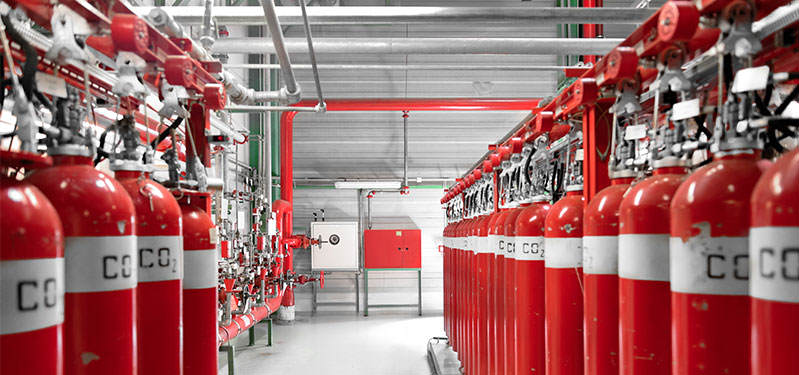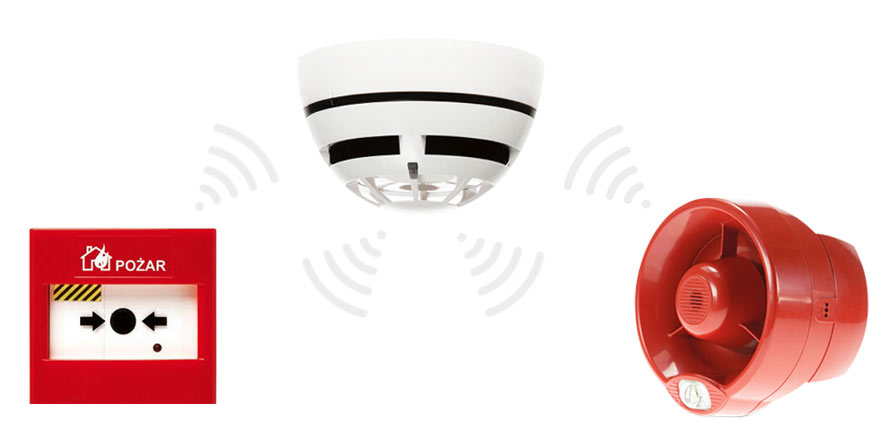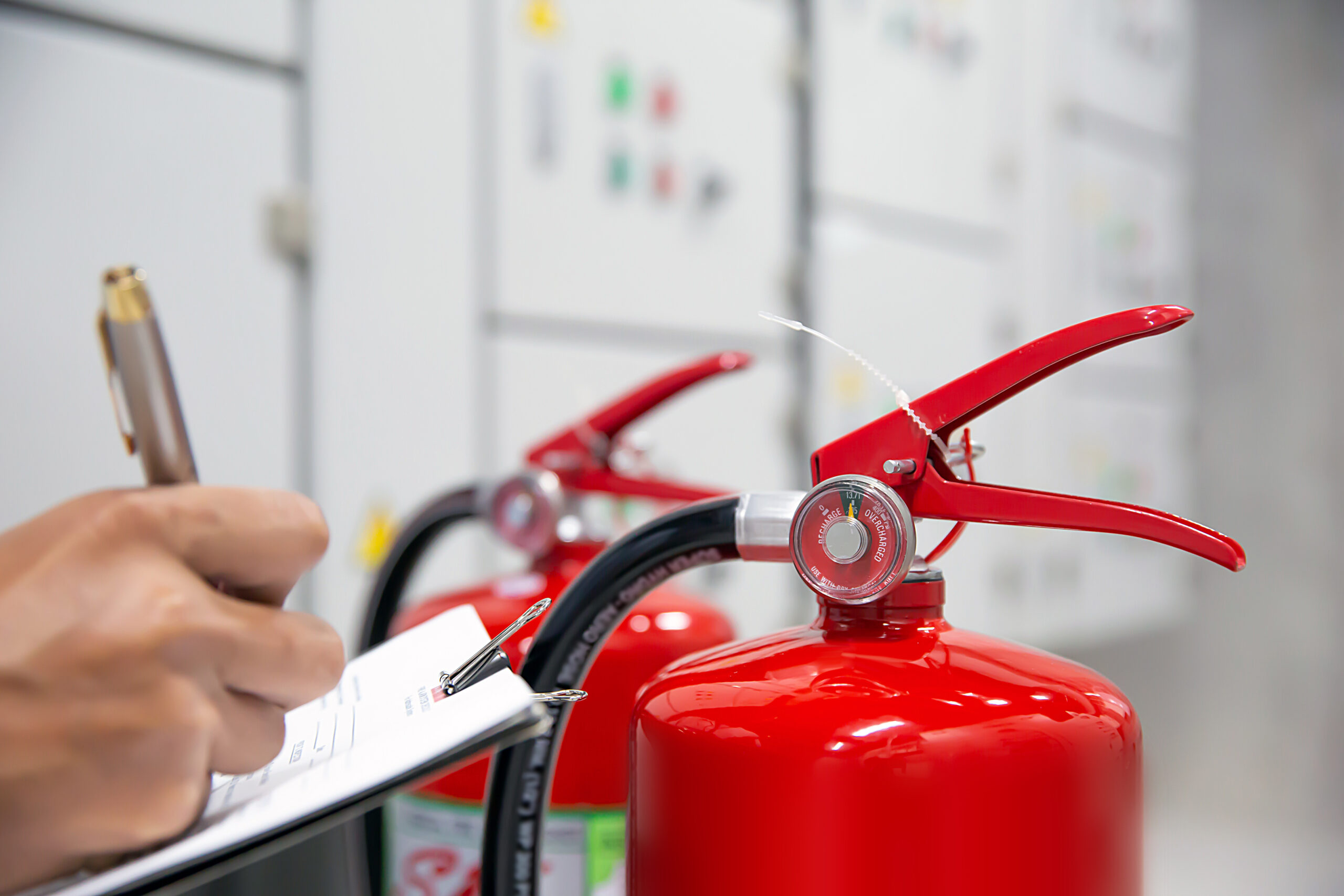Overview
A fire alarm system warns people when smoke, fire, carbon monoxide or other fire-related or general notification emergency|emergencies are detected. These alarms may be activated automatically from smoke detectors and heat detectors or may also be activated via manual fire alarm activation devices such as manual call points or pull stations. Alarms can be either motorized bells or wall mountable sounders or horns. They can also be speaker strobes which sound an alarm, followed by a voice evacuation message which warns people inside the building not to use the elevators. Fire alarm sounders can be set to certain frequencies and different tones including low, medium, and high, depending on the country and manufacturer of the device. Most fire alarm systems in Europe sound like a siren with alternating frequencies. Fire alarm electronic devices are known as horns in the United States and Canada and can be either continuous or set to different codes. Fire alarm warning devices can also be set to different volume levels.
Design
After the fire protection are established—usually by referencing the minimum levels of protection mandated by the appropriate model building code, insurance agencies, and other authorities—the fire alarm designer undertakes to detail specific components, arrangements, and interfaces necessary to accomplish these goals. Equipment specifically manufactured for these purposes is selected and standardized installation methods are anticipated during the design.
- ISO 7240-14 is the international standard for Design, installation, commissioning, and service of fire detection and fire alarm system in and around the building. this standard was published in August 2013; Status, Published; Edition 1; Technical Committee ISO/TC 21/SC 3 Fire detection and Alarm system.[1]
- NFPA 72, The National Fire Alarm Code is an established and widely used installation standard from the United States. In Canada, the ULC is the standard for the fire system.
Last version 2019; Status, Published. This code is part of a family standard NFPA
- TS 54 -14 is a Technical Specification (CEN/TS) for Fire detection and fire alarm system - Part 14: Guidelines for planning, design, installation, commissioning, use, and maintenance. This document has been prepared by Technical Committee CEN/TC72, This document is part of the EN 54 series of standards. This standard was published in October 2018; Status, Published.[2]
There are national codes in each European country for planning, design, installation, commissioning, use and maintenance of fire detection system with additional requirements that are mentioned on TS 54 -14
- Germany, Vds 2095[3]
- Italy, UNI 9795[4]
- France NF S61-936[5]
- Spain UNE 23007-14[6]
- United Kingdom BS 5839 Part 1[7]
- Fire alarm control panel (FACP) AKA fire alarm control unit (FACU); This component, the hub of the system, monitors inputs, and system integrity, controls outputs and relays information.
- Primary power supply: Commonly the nonswitched 120 or 240-volt alternating current source supplied from a commercial power utility. In nonresidential applications, a branch circuit is dedicated to the fire alarm system and its constituents. "Dedicated branch circuits" should not be confused with "Individual branch circuits" which supply energy to a single appliance.
- Secondary (backup) power supplies: This component, commonly consisting of sealed lead-acid storage batteries or other emergency sources including generators, is used to supply energy in the event of a primary power failure. The batteries can be either inside the bottom of the panel or inside a separate battery box installed near the panel.
- Initiating devices: These components act as inputs to the fire alarm control unit and are either manually or automatically activated. Examples would be devices such as pull stations, heat detectors, duct detectors, and smoke detectors. Heat and smoke detectors have different categories of both kinds. Some categories are a beam, photoelectric, ionization, aspiration, and duct.
- Fire alarm notification appliance: This component uses energy supplied from the fire alarm system or other stored energy source, to inform the proximate persons of the need to take action, usually to evacuate. This is done by means of pulsing incandescent light, flashing strobe light, electromechanical horn, siren, electronic horn, chime, bell, speaker, or a combination of these devices. Strobes are either made of a xenon tube (most common) or recently LEDs.
- Building safety interfaces: This interface allows the fire alarm system to control aspects of the built environment, prepare the building for fire, and control the spread of smoke fumes and fire by influencing air movement, lighting, process control, human transport, and availability of exits.[8]
Initiating devices
- Manually actuated devices; also known as fire alarm boxes, manual pull stations, or simply pull stations, break glass stations, and (in Europe) call points. Devices for manual fire alarm activation are installed to be readily located (near the exits), identified, and operated. They are usually actuated by means of physical interaction, such as pulling a lever or breaking glass.
- Automatically actuated devices can take many forms intended to respond to any number of detectable physical changes associated with fire: convected thermal energy for a heat detector, products of combustion for a smoke detector, radiant energy for a flame detector, combustion gases for a fire gas detector, and operation of sprinklers for a water-flow detector. The newest innovations can use cameras and computer algorithms to analyze the visible effects of fire and movement in applications inappropriate for or hostile to other detection methods[9][10]






